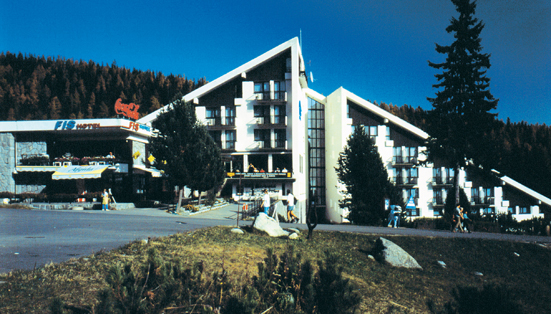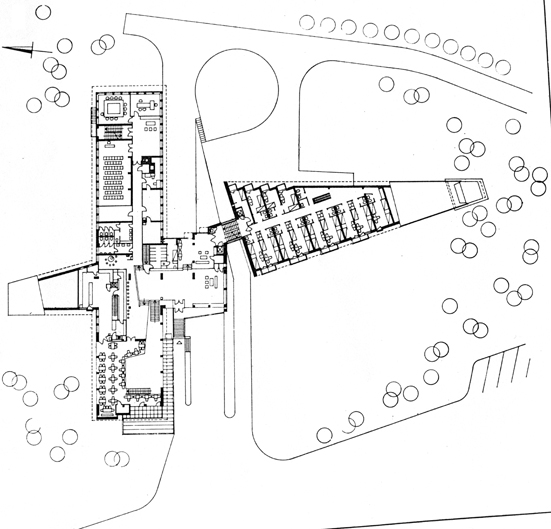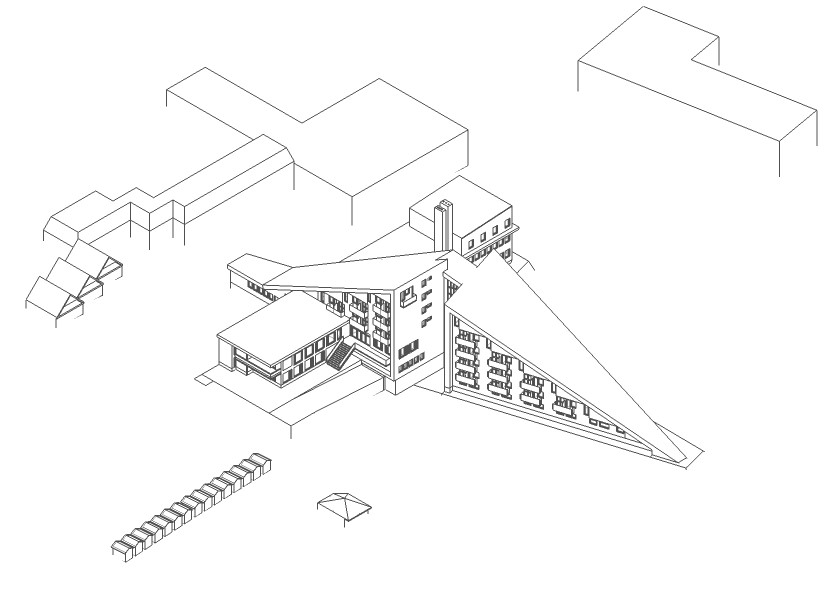| address architect collaboration project realization |
Štrbské Pleso č. 32 Eugen Kramár Ján Šprlák-Uličný 1967 1969 |
The architect conceived the hotel as a building of two wings with slanting roofs, articulated with sculptural balconies, retaining the correct proportion with respect to the surrounding mountain landscape. The result is one of Eugen Kramár’s best works, harmonically combining modern abstract principles with the forms of mountain folk architecture. Hotel FIS is a composition of two slightly shifted masses, in the form of a right triangle, linked by a glass staircase corridor. The slanting roofs reach down to the very ground level. Emerging from the northern accommodations part is the two-storey mass of the social, dining and office wing, covered by a flat roof. The accommodations sections are arranged in three parts, with a structural system of masonry transverse walls. Overall capacity is 175 beds.
Literature:
Areál zimných športov na Štrbskom Plese. Projekt 11, 1969, 5 – 6, p. 91.
KRAMÁR, Eugen: Architektúra v Tatrách. Projekt 12, 1970, 5 – 6, p. 220 – 227.
Architektonické dielo Eugena Kramára. Katalóg výstavy. Ed. F. Konček. Bratislava, SAS 1991. [36].
ŠLACHTA, Štefan: Profesor Eugen Kramár. Projekt 33, 1991, 3, p. 34 – 37.
DULLA, Matúš: Architektúra šesťdesiatych rokov. In: Šesťdesiate roky v slovenskom výtvarnom umení. Katalóg výstavy. SNG, Bratislava 1995, p. 304 – 319.
DULLA, Matúš – MORAVČÍKOVÁ, Henrieta: Architektúra Slovenska v 20. storočí. Bratislava, Slovart 2002, 512 p., p. 201, 232, 429.
DULLA, Matúš: Ľahká mimobežnosť moderny a tradície. Zvláštne /či/ obyčajné polstoročie architektúry na Slovensku: 1939 – 1989. S. 123 – 157. In: Architektúra Slovenska. Impulzy a reflexia. Katalóg výstavy. Ed. Adolph Stiller, Štefan Šlachta. Wien, Verlag Anton Pustet 2003. 204 p.
ŠLACHTA, Štefan: Neznámi známi. Bratislava, SAS 2004, 240 p., p. 94, 95.
Lyžiarsky areál. DOCOMOMO národný register: Slovensko. Architektúra & urbanizmus 40, 2006, 3 – 4, p. XV.
Photo:
Alexander Jiroušek
Ground plan:
Projekt, 1970
This model was made possible through the financial support of the agency KEGA (modely): 003STU-4/2016



